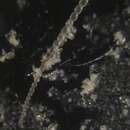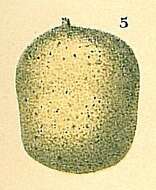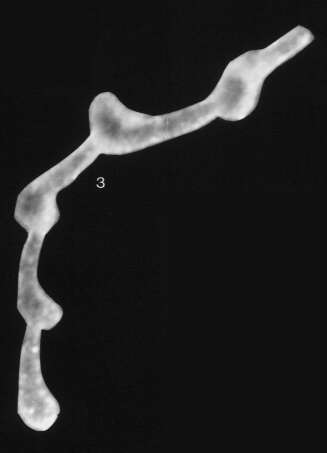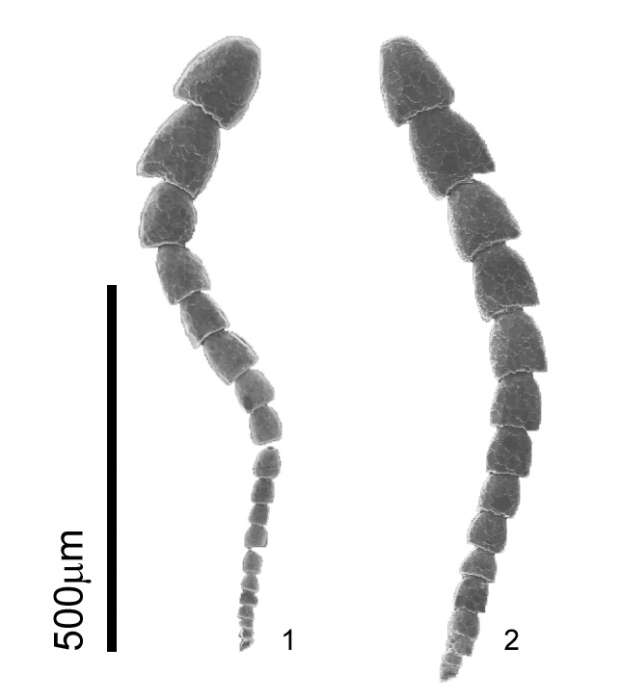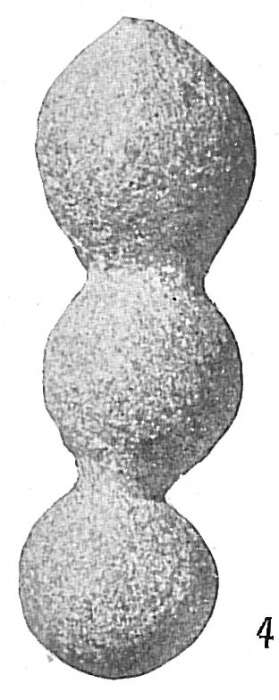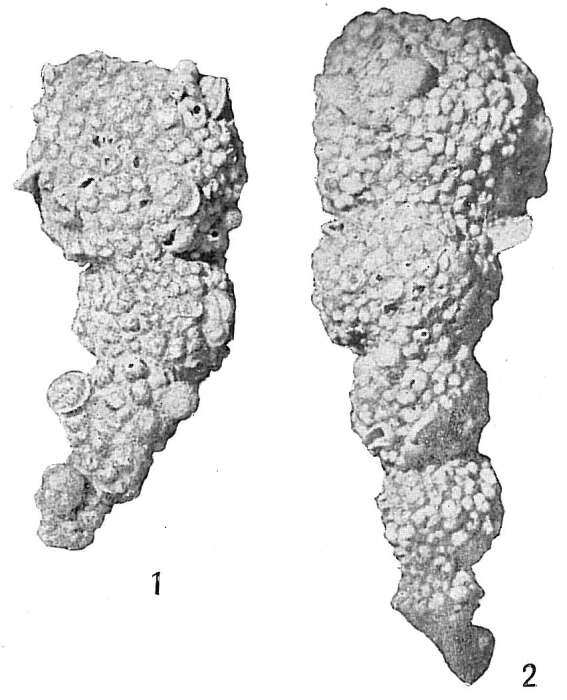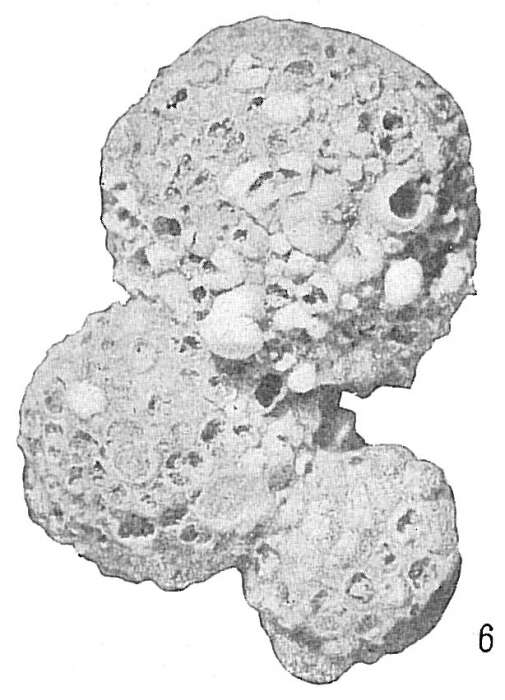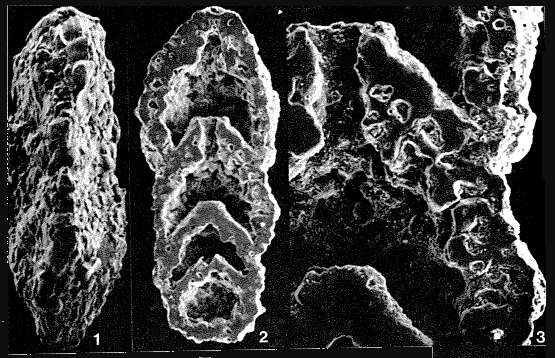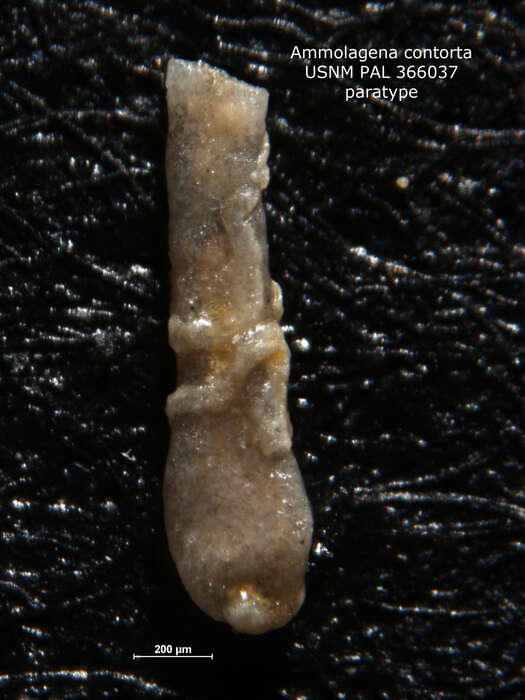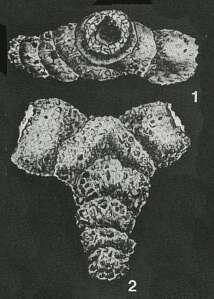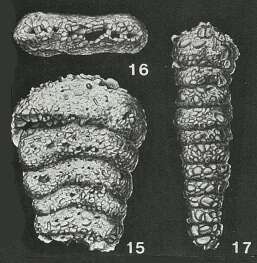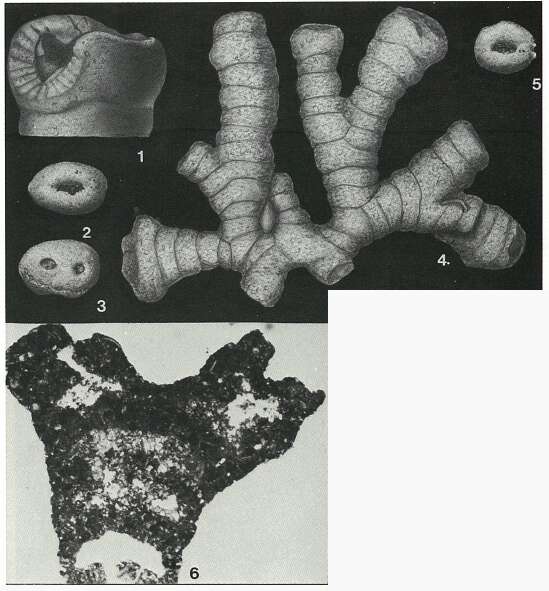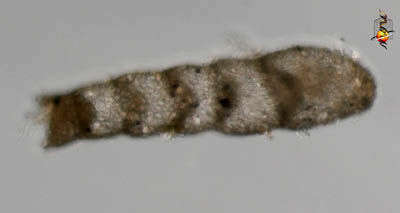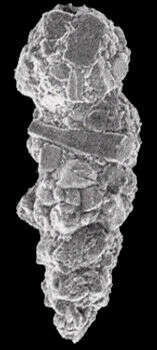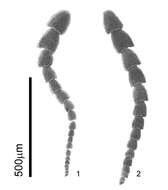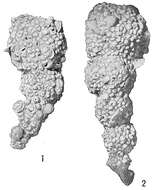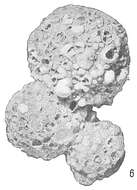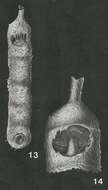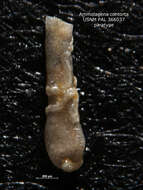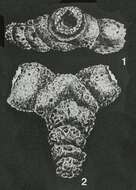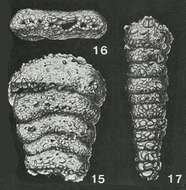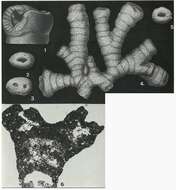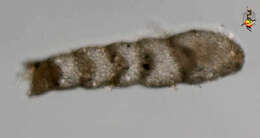-
Schröder, C. J.; Medioli, F. S.; Scott, D. B. (1989). Fragile Abyssal Foraminifera (Including New Komokiacea) from the Nares Abyssal Plain. Micropaleontology. 35(1): 10-48., available online at (https://doi.org/10.2307/1485535) page(s): p. 42, pl. 7, fig. 3 (holotype x 138).
-
Guadiana intertidal environments; figs. 1 and 2 from Fig. 2 (images 15 and 16) in Camacho, S., Moura, D., Connor, S., Boski, T. and Scott, D. 2015. Taxonomy, ecology and biogeographical trends of dominant benthic foraminifera species from an Atlantic-Mediterranean estuary (the Guadiana, southeast Portugal). Palaeontologia Electronica, 18.1.17A, 1-27.
-
Guadiana intertidal environments; from Fig. 2 (images 17) in Camacho, S., Moura, D., Connor, S., Boski, T. and Scott, D. 2015. Taxonomy, ecology and biogeographical trends of dominant benthic foraminifera species from an Atlantic-Mediterranean estuary (the Guadiana, southeast Portugal). Palaeontologia Electronica, 18.1.17A, 1-27.
-
Image source: Cushman, J.A. 1920. The Foraminifera of the Atlantic Ocean. Part 2. Lituolidae. Bull. U.S. Natl. Mus. 104.
-
Image source: Cushman, J.A. 1920. The Foraminifera of the Atlantic Ocean. Part 2. Lituolidae. Bull. U.S. Natl. Mus. 104.
-
Image source: Cushman, J.A. 1920. The Foraminifera of the Atlantic Ocean. Part 2. Lituolidae. Bull. U.S. Natl. Mus. 104.
-
Ginesina sp.nov. sensu Jones, R.W. 1994. The Challenger Foraminifera. Image source: Brady, H.B. (1884) Pl. 39
-
Image source: Cushman, J.A. 1910. A Monograph of the Foraminifera of the North Pacific Ocean. Part I. Astrorhizidae and Lituolidae. Bull. U.S. Nation. Mus 71: xiv+134 pp.
-
Image source: Cushman, J.A. 1921. Foraminifera of the Philippine and adjacent seas. Bull. U.S. Natl. Mus. 100(4).
-
Image source: Cushman, J.A. 1921. Foraminifera of the Philippine and adjacent seas. Bull. U.S. Natl. Mus. 100(4).
-
Image source: Goës, A. 1894. A Synopsis of the Arctic and Scandinavian recent marine Foraminifera hitherto discovered. Kong. Svenska Vetenskaps-Akademiens Handlingar 25(9): 1-127 + 25 pls. (Notae numerorum tenues mensuram indicant millimetricam).
-
Loeblich, A. R., Tappan, H. N., 1987: Foraminiferal genera and their classification. Van Nostrand, Reinhold Co. New York 1728 pp. Plate 377, Figs. 11-13: Holocene, Ria de Vigo, northwest Spain. 11, Megalospheric test, x 107; 12, 13, microspheric tests, x 107 (from Colom, 1963).
-
Loeblich, A. R., Tappan, H. N., 1987: Foraminiferal genera and their classification. Van Nostrand, Reinhold Co. New York 1728 pp. Plate 44, Figs. 15-16. L. Cretaceous (Aibian), Duck Creek Formation, Grayson County, Texas, USA. 15, Side view showing broad and closely appressed chambers, x 100; 16, enlargement of surface to show very finely agglutinated wall, x 700 (new SEM figures).
-
Loeblich, A. R., Tappan, H. N., 1987: Foraminiferal genera and their classification. Van Nostrand, Reinhold Co. New York 1728 pp. Plate 45, Figs. 13-14: Holocene, Caribbean, off Cuba at 1,140 m. 13, Holotype, side view, x 19.5; 14, enlargement of final chamber of same showing long neck of earlier chamber within, x 41.
-
Loeblich, A. R., Tappan, H. N., 1987: Foraminiferal genera and their classification. Van Nostrand, Reinhold Co. New York 1728 pp. Plate 203, Figs. 1-4: Holocene, Cochinos Bay, Cuba. 1, Side view of triangular individual similar to holotype, SEM, x 50; 2, 3, longitudinal half-section of specimen that had three early chambers of triangular section and flattened final chamber, SEM, x 50, and part enlarged to show the irregular alveoles in the thick agglutinated wall, SEM, x 150; 4, longitudinal section showing coarsely agglutinated wall and little cement, x 85 (from Loeblich and Tappan, 1985).
-
Loeblich, A. R., Tappan, H. N., 1987: Foraminiferal genera and their classification. Van Nostrand, Reinhold Co. New York 1728 pp. Plate 203, Figs. 1-4: Holocene, Cochinos Bay, Cuba. 1, Side view of triangular individual similar to holotype, SEM, x 50; 2, 3, longitudinal half-section of specimen that had three early chambers of triangular section and flattened final chamber, SEM, x 50, and part enlarged to show the irregular alveoles in the thick agglutinated wall, SEM, x 150; 4, longitudinal section showing coarsely agglutinated wall and little cement, x 85 (from Loeblich and Tappan, 1985).
-
Loeblich, A. R., Tappan, H. N., 1987: Foraminiferal genera and their classification. Van Nostrand, Reinhold Co. New York 1728 pp. Plate 48, Fig. 1: U. Devonian (Famennian), Sappington Member of the Three Forks Formation, Montana, USA. Attached side of holotype, showing loosely coiled attached early stage and free growing later stage, x 33 (from Gutschick, 1962).
-
National Museum of Natural History, Smithsonian Institution. “Smithsonian Learning Lab Resource: Ammolagena contorta Waters, 1927.” Smithsonian Learning Lab, Smithsonian Office of Educational Technology, 9 Nov. 2015, https://learninglab.si.edu/q/r/482687 http://n2t.net/ark:/65665/315ffef3c-01a3-4f0a-83cc-f4543789e7d5
-
Loeblich, A. R., Tappan, H. N., 1987: Foraminiferal genera and their classification. Van Nostrand, Reinhold Co. New York 1728 pp. Plate 45, Figs. 1-2: Cretaceous, La Cruz Formation, Venezuela. Top and side view of holotype, x 26 (from Bolli, 1961).
-
Loeblich, A. R., Tappan, H. N., 1987: Foraminiferal genera and their classification. Van Nostrand, Reinhold Co. New York 1728 pp. Plate 45, Figs. 15-17: U. Cretaceous (Cenomanian), Pawpaw Formation, Grayson County, Texas, USA. 15, 16, Side and top views of microspheric individual with broken base, x 10; 17, narrower megalospheric individual, x 10.
-
Loeblich, A. R., Tappan, H. N., 1987: Foraminiferal genera and their classification. Van Nostrand, Reinhold Co. New York 1728 pp. Plate 47, Figs. 1-6: U. Cretaceous (Cenomanian), Tunisia. 1, Broken individual showing canaliculate wall, x 30; 2-5, holotype, 2, 3, 5, apertural views of different branches; 4, entire holotype; all x 15.5 (from Loeblich and Tappan, 1964); 6, sectioned topotype, x 25 (new figure in Loeblich and Tappan, 1987).
-
Image courtesy of Elisabeth Alve, University of Oslo. Originally published in J. Foram. Res. 16: 261-284; used with permission.
-
Reophax (ree-owe-fax), one of the foraminifera in which the series of chambers forms a linear structure rather than forming a spiral structure - which is more usual. This is the vacated test. Phase contrast.
-
Reophax species have a relatively simple, linear chamber arrangement. This specimen was harvested in Nueces Bay, South Texas. Image courtesy of Pamela Stephens, Midwestern State University.

